A
Auto Express
Guest
The Nissan Leaf impresses in pretty much every area. It’s easy to drive and comfortable, especially around town, and it has a decent range that should make it appealing to a wider range of buyers. Given how much it costs, there’s an impressive amount of tech on offer, too, and it has enough space for all the family.
There’s a chance that people who already own one of the first-generation Leafs will be unhappy to see just how ‘normal’ this model makes owning, driving and living with an electric car – in its looks, interior, interface and the way it drives. However, for us, our only real disappointment is that, from a quality and style point of view, it’s not as appealing as a Volkswagen e-Golf.
The first Nissan Leaf was an electric car pioneer, and the second generation builds on this with an improved range, a better price and new tech designed to help get the most from its electric drive system. It really is an electric model that you could seriously consider as your only car.
Where the current Leaf stands out is with its driving range. Under the latest WLTP tests, Nissan quotes a range of 168 miles, and you can actually expect to see a range of around 160 miles in everyday use, in the summer at least: cold weather seriously limits EV range, and you might be lucky to get around 100 miles from a full charge when it's really chilly.
If you want to go even further, there’s the Nissan Leaf e+, with the ‘+’ part of the name signifying that this version has a bigger battery, which gives it a WLTP range of 239 miles. It also has more power, with 214bhp compared to the standard car's 148bhp.
Charging a Leaf via a 7kW wallbox home charger will take 7.5 hours for the standard car, while the Leaf e+ takes 11.5 hours. A 50kW fast charger will get the standard car's battery from 20 to 80% charge in an hour. If you keep the battery topped up every time you park (much like you would with a smartphone) then range anxiety shouldn't be an issue the vast majority of the time.
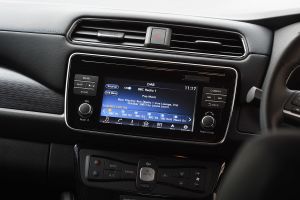
Nissan Leaf - infotainment
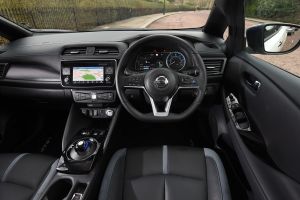
Nissan Leaf - dash
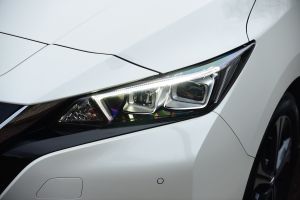
Nissan Leaf - front light
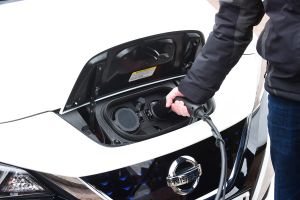
Nissan Leaf - plugged in
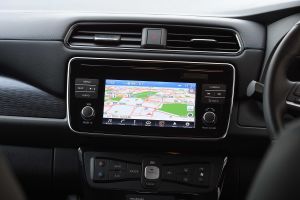
Nissan Leaf - sat-nav

Nissan Leaf - dials
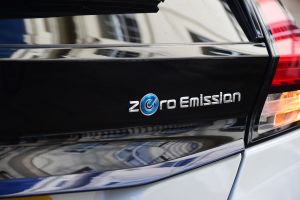
Nissan Leaf - rear detail
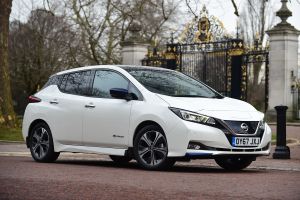
Nissan Leaf - front static
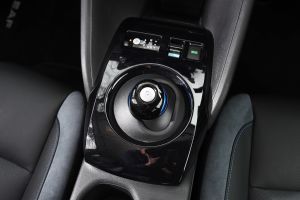
Nissan Leaf - centre console
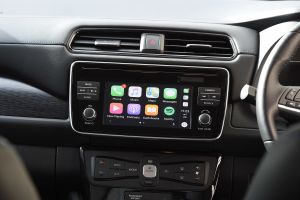
Nissan Leaf - Apple CarPlay
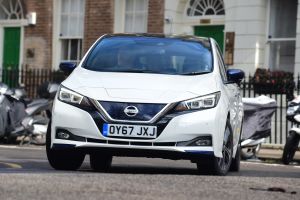
Nissan Leaf - front cornering
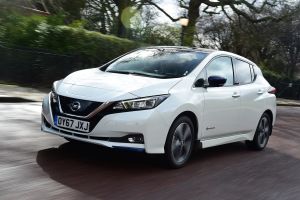
Nissan Leaf - front action

Nissan Leaf - front
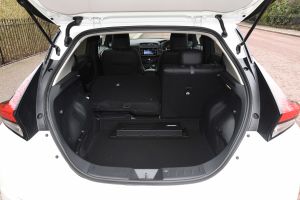
Nissan Leaf - boot
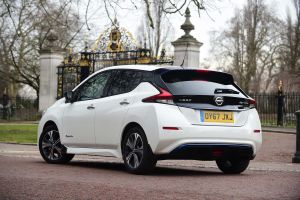
Nissan Leaf - rear static

Nissan Leaf - rear seats
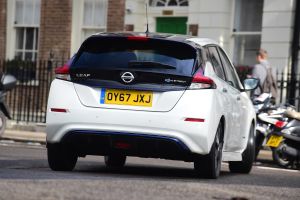
Nissan Leaf - rear
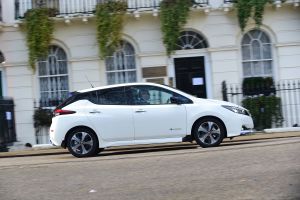
Nissan Leaf - side
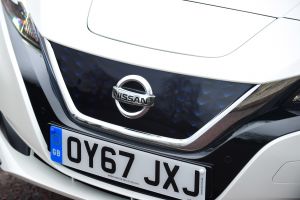
Nissan Leaf - grille
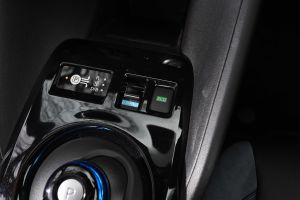
Nissan Leaf - e Pedal
That will leave you to get on and enjoy the Nissan Leaf and how it drives. It's quiet, refined and comfortable around town - although the suspension is a little on the firm side to help it cope with the weight of the batteries - while the assorted driving aids are very useful.
The main highlight is Nissan's e-Pedal system. This boosts the resistance from the electric motor and allows you to drive just using the accelerator, without the need to press the brake unless in an emergency. Once you get the hang of it, it's possible to boost your electric driving range by being as smooth as possible with the e-Pedal system.
Also available is Nissan's ProPilot driver assistance system. This includes adaptive cruise control, lane assist and traffic jam assist, which can control the car at low speeds in slow-moving traffic.
While the Nissan Leaf was an electric pioneer, it now has a fast-growing number of rivals that come in a variety of guises. The main opponent in terms of size is the VW e-Golf, although its driving range isn't quite as long and it is about to be replaced by the ID.3. The BMW i3 is a premium alternative that trades on its unique design and advanced tech, while the Renault Zoe is a supermini-sized option. Hyundai now offers the Kona Electric SUV, which has ore usable range, as does the Kia e-Niro.
Hyundai also offers the Ioniq, which comes as an all-electric car, or a plug-in hybrid. If range anxiety is still something that concerns you, then the plug-in option opens up a variety of other options, including the Toyota Prius Plug-in, Kia Niro Plug-in an even the Mitsubishi Outlander PHEV.

Continue reading...
There’s a chance that people who already own one of the first-generation Leafs will be unhappy to see just how ‘normal’ this model makes owning, driving and living with an electric car – in its looks, interior, interface and the way it drives. However, for us, our only real disappointment is that, from a quality and style point of view, it’s not as appealing as a Volkswagen e-Golf.
The first Nissan Leaf was an electric car pioneer, and the second generation builds on this with an improved range, a better price and new tech designed to help get the most from its electric drive system. It really is an electric model that you could seriously consider as your only car.
Where the current Leaf stands out is with its driving range. Under the latest WLTP tests, Nissan quotes a range of 168 miles, and you can actually expect to see a range of around 160 miles in everyday use, in the summer at least: cold weather seriously limits EV range, and you might be lucky to get around 100 miles from a full charge when it's really chilly.
- SEE MORE Best electric cars to buy 2020
If you want to go even further, there’s the Nissan Leaf e+, with the ‘+’ part of the name signifying that this version has a bigger battery, which gives it a WLTP range of 239 miles. It also has more power, with 214bhp compared to the standard car's 148bhp.
Charging a Leaf via a 7kW wallbox home charger will take 7.5 hours for the standard car, while the Leaf e+ takes 11.5 hours. A 50kW fast charger will get the standard car's battery from 20 to 80% charge in an hour. If you keep the battery topped up every time you park (much like you would with a smartphone) then range anxiety shouldn't be an issue the vast majority of the time.

Nissan Leaf - infotainment

Nissan Leaf - dash

Nissan Leaf - front light

Nissan Leaf - plugged in

Nissan Leaf - sat-nav

Nissan Leaf - dials

Nissan Leaf - rear detail

Nissan Leaf - front static

Nissan Leaf - centre console

Nissan Leaf - Apple CarPlay

Nissan Leaf - front cornering

Nissan Leaf - front action

Nissan Leaf - front

Nissan Leaf - boot

Nissan Leaf - rear static

Nissan Leaf - rear seats

Nissan Leaf - rear

Nissan Leaf - side

Nissan Leaf - grille

Nissan Leaf - e Pedal
That will leave you to get on and enjoy the Nissan Leaf and how it drives. It's quiet, refined and comfortable around town - although the suspension is a little on the firm side to help it cope with the weight of the batteries - while the assorted driving aids are very useful.
The main highlight is Nissan's e-Pedal system. This boosts the resistance from the electric motor and allows you to drive just using the accelerator, without the need to press the brake unless in an emergency. Once you get the hang of it, it's possible to boost your electric driving range by being as smooth as possible with the e-Pedal system.
Also available is Nissan's ProPilot driver assistance system. This includes adaptive cruise control, lane assist and traffic jam assist, which can control the car at low speeds in slow-moving traffic.
While the Nissan Leaf was an electric pioneer, it now has a fast-growing number of rivals that come in a variety of guises. The main opponent in terms of size is the VW e-Golf, although its driving range isn't quite as long and it is about to be replaced by the ID.3. The BMW i3 is a premium alternative that trades on its unique design and advanced tech, while the Renault Zoe is a supermini-sized option. Hyundai now offers the Kona Electric SUV, which has ore usable range, as does the Kia e-Niro.
Hyundai also offers the Ioniq, which comes as an all-electric car, or a plug-in hybrid. If range anxiety is still something that concerns you, then the plug-in option opens up a variety of other options, including the Toyota Prius Plug-in, Kia Niro Plug-in an even the Mitsubishi Outlander PHEV.

Continue reading...
